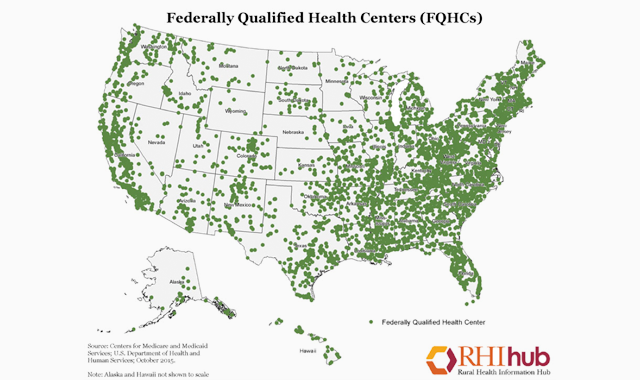Addressing the gap in dental delivery care for all Americans
According to New analysis from The Pew Charitable Trust’s Dental Campaign, these communities enjoy fewer dental visits and preventative treatment than the white population and suffer more untreated tooth decay and tooth loss.

Communities of color suffer the most when it comes to unmet health needs related to dental care. According to new analysis from The Pew Charitable Trust’s Dental Campaign, these communities enjoy fewer dental visits and preventative treatment than the white population and suffer more untreated tooth decay and tooth loss.
Jane Koppelman, Director of Research for Pew, said the findings show the dental care delivery system is not working for a large portion of Americans, particularly those on Medicaid and those without dental insurance, which is a significant part of the population. According to a report released by the Centers for Medicare & Medicaid Services last month, there are over 72 million individuals enrolled in Medicaid and CHIP as of January 2016. The National Association of Dental Plans asserts that 114 million Americans had no dental coverage at the end of 2014.
“It’s also not working for people in areas where dentists are scarce. The Federal government finds that more than 48 million people are living in areas that are known to have dentist shortages,” Koppelman says. “So there are a lot of Americans that are left out of the dental care market, and unfortunately, we’ve seen a problem that is most urgent for people of color.”
In 2000, the Surgeon General released a report on oral health, the first from that office addressing oral health, which described a delivery system that left one third of Americans out from the dental care delivery system. Koppelman was disheartened that the gap had not been closed more by now.
“In 15 years with all of the efforts and all of the activities that have been going on in the healthcare arena and with healthcare reform, it’s striking to me that we still have significant disparity by race and by income,” she says.
More dental news: A game changer: 2017 will bring new CDT code for gingivitis
Pew addresses needed changes in business as usual
Pew is working on changes to address this gap. The first is to diversify the dental workforce for efficiency and flexibility. Koppelman suggests proliferating the mid-level dental provider model with the addition of dental therapists. Dental therapists are trained to do a smaller number of procedures than dentists and, as a result, can treat tooth decay competently and effectively-and more economically-than the dentist.
“One need is that dental therapists can make it more profitable for dentists to treat people on Medicaid,” Koppelman says.
Koppelman asserts that two thirds of dentists do not treat patients on public assistance in large part because the payments are too low and the paperwork too burdensome. For the more than 72 million people relying on Medicaid for dental insurance, finding a dentist can be difficult. However, the use of a dental therapist can make that more affordable for dentists.
In addition, the dental therapist can also make it to satellite clinics in rural areas where dentists don’t usually practice or where it is hard to have a full-time practice. This not only provides more care for more people, but it also can improve profitability for the practice as well. Pew did a case study of a private practice that hired a dental therapist in Minnesota, which was the first state to authorize dental therapists statewide.
“Talk about surprising findings! Within a year, he increased his Medicaid patient population by 50 percent, he increased his overall patient population, and he increased his profits by about $24,000. And he did this working in a state with perhaps the lowest Medicaid reimbursement rate in the nation,” Koppelman says.
To download the full study, please click here or visit the website at www.pewtrusts.org.
Continue to page two for more...
The second change Pew suggests is to increase the number of school-based dental programs around the country that that provide sealants to low-income kids. Research shows that low-income children are almost twice as likely as high-income kids to suffer from dental decay. Koppelman says school-based sealant programs that target low-income kids have been found reduce tooth decay by an average of 60 percent over five years. A low-cost treatment, a sealant is one third of the cost of a filling.
“We know they work and we know that low-income kids need them the most,” Koppelman says. “Schools are where we know we can find children every day. So it makes sense to bring the care to the children.”
To achieve this change, Pew explores removing, improving or modifying state-wide policies that get in the way of increasing these programs.
What can you do to bridge the gap in dental care?
Pew’s dental campaign facilitates access to dental care for those hardest hit by promoting policies that increase the number of available providers in the affected areas, as well as by working at the state and federal policy levels for improvements to expand the reach of preventative services. However, there are things individual clinicians can do to bridge the gap for dental care access, too, including:
• Hiring a dental therapist to accommodate more patient care in office and in underserved areas in states where they are authorized.
• Accepting more Medicaid patients.
• Supporting their local oral health primary care association’s action agenda.
• Contracting to provide care for Federally Qualified Health Centers (FQHCs) in their area.
• Extending office hours outside of business hours for working people and their families.
“A lot of people don’t have the flexibility to be off during traditional business hours. Being open later in the evenings or on weekends would open access to a lot of families,” Koppelman says.